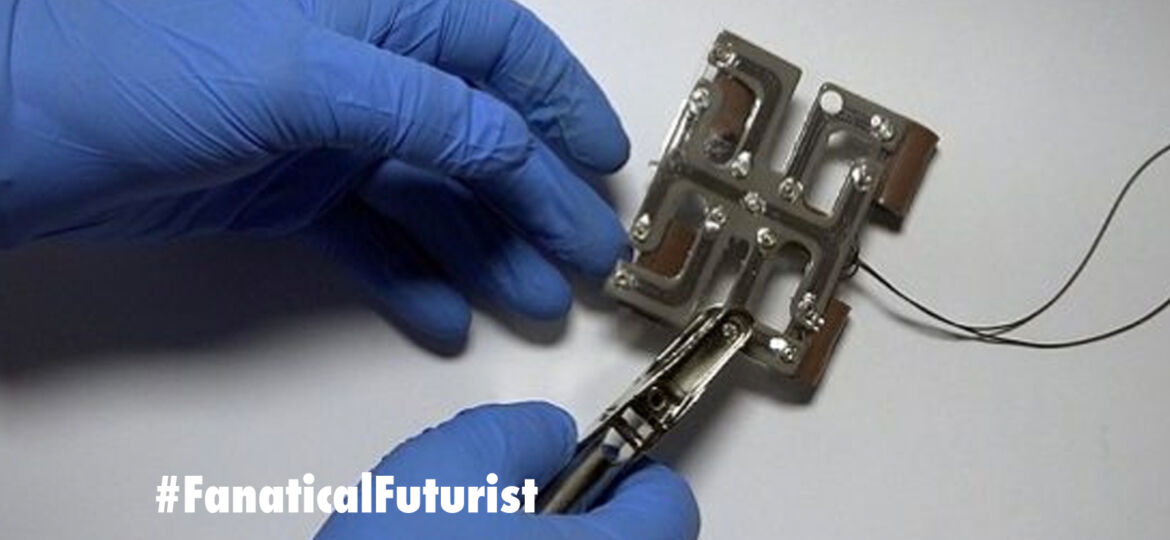
WHY THIS MATTERS IN BRIEF
There are lots of dangerous industrial applications, and other use cases, where equipment of all kinds suffer extreme wear and tear, this new material could extend the life of products by multiples of time.
The idea of creating self-repairing machines has been a popular fantasy, and ironically, nightmare, ever since the Terminator franchise mythologised the concept back in the 1980s, and while companies are still a long way off from creating robots that can completely repair themselves, despite steady advances in self-healing materials and even self-healing electronics, the day when we realise our ultimate dream, or nightmare, is inching closer.
This week researchers at Carnegie Mellon University announced they’d created a self-healing material, composed of liquid metal droplets suspended in a soft rubber, that can spontaneously repair itself after sustaining “catastrophic damage,” and they published their research in Nature Materials.
“If we want to build machines that are more compatible with the human body and the natural environment, we have to start with new types of materials,” said Carmel Majidi, an engineer at Carnegie Mellon University who directs the Integrated Soft Materials Laboratory.
Researchers say their material is known as a “stretchable electronic,” an evolving technology that combines electronic circuits and sensors with flexible elastic material.
So how does it work?
When damaged, droplets suspended in the material rupture, forming new connections with neighboring droplets and rerouting electrical signals without interruption. To demonstrate the material’s effectiveness, researchers powered a clock while simultaneously damaging the conductive circuitry using a sharp object.
What makes their material even more unique, researchers say, is that it is able to conduct electricity, even when stretched, making it ideal for transmitting data or maintaining power. If perfected, researchers believe stretchable electronics could have numerous applications, such as a robotic first responder that can enter treacherous environments without being damaged, wearable computers used by athletes or as a structure on Mars, where inhospitable temperatures and weather put technology at risk.
“Other research in soft electronics has resulted in materials that are elastic and deformable, but still vulnerable to mechanical damage that causes immediate electrical failure,” Majidi said. “The unprecedented level of functionality of our self-healing material can enable soft-matter electronics and machines to exhibit the extraordinary resilience of soft biological tissue and organisms.”
Carnegie Mellon researchers are far from alone in their quest to create self-repairing materials that could be used by robots at some point, for example, researchers in Belgium recently created a robotic hand filled with a “jellylike” substance that can self-repair when heat is applied.
“When you add heat, they reorganise to stick back together without leaving any weak spots.”
Bram Vanderborght, one of the five researchers behind that project, told the publication he envisioned the technology being used in the food industry or in factory lines, where robots with softer appendages could be useful.
“A robot is very complex and difficult to repair. And the soft robots are particularly susceptible to sharp objects and high pressure,” Vanderborght said, “this research is the first step in introducing self-healing materials in soft robotics, which we think will start a whole new research field of self-healing robotics.”

















[…] today can run, open doors, self-heal, merge and split with each other, consume biological material such as human corpses for energy […]